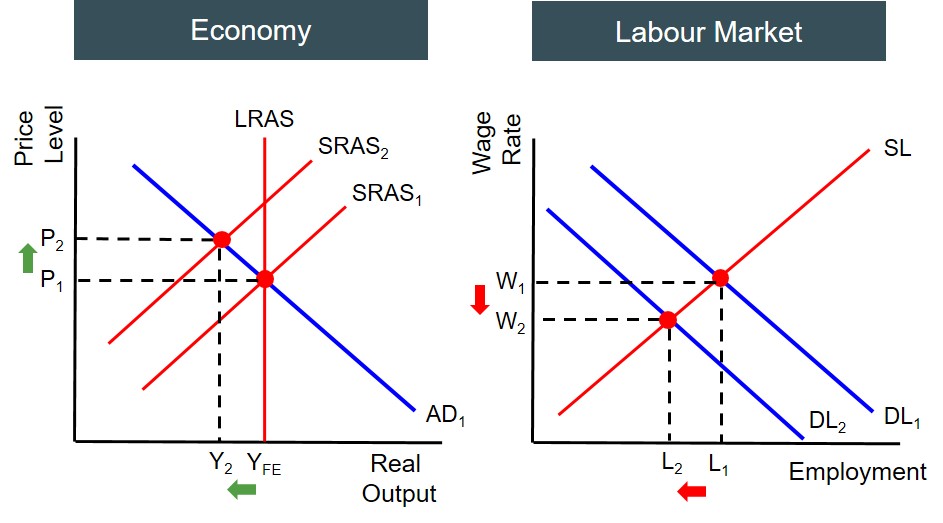A term used to describe an economy that is experiencing anaemic growth, rising inflation and high levels of unemployment.
Below is a series of diagrams to show how to represent the economic impacts of stagflation for both the economy and the labour market.

Stagflation is created as a result of an inward shift in the SRAS curve, as shown in the AD-AS diagram above. This inward shift is an example of a supply side shock as is normally instigated because of an increase in production costs such as commodity prices or wage costs. Another term that could be used to describe stagflation is cost push inflation.
Because the stagflation has created lower output (as a result of firms curtailing production). This means value of labour for firms is reduced and therefore this causes an inwards shift in the demand for labour curve in the labour market. Assuming ceteris paribus, this results in reduced employment and creates rising unemployment in the economy.